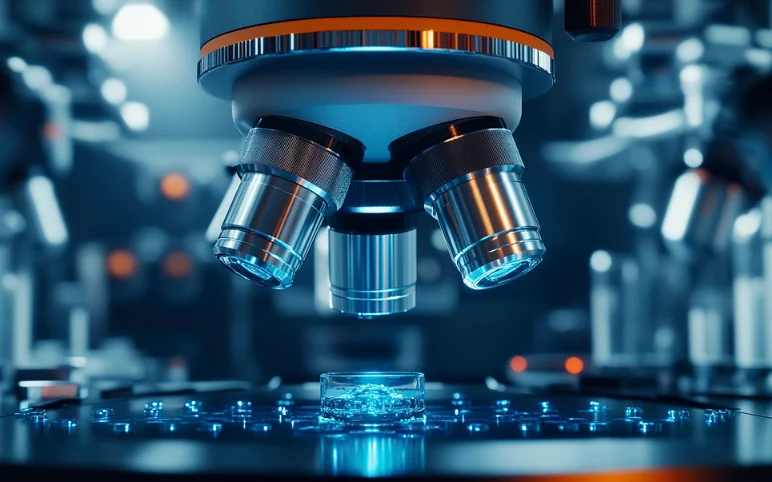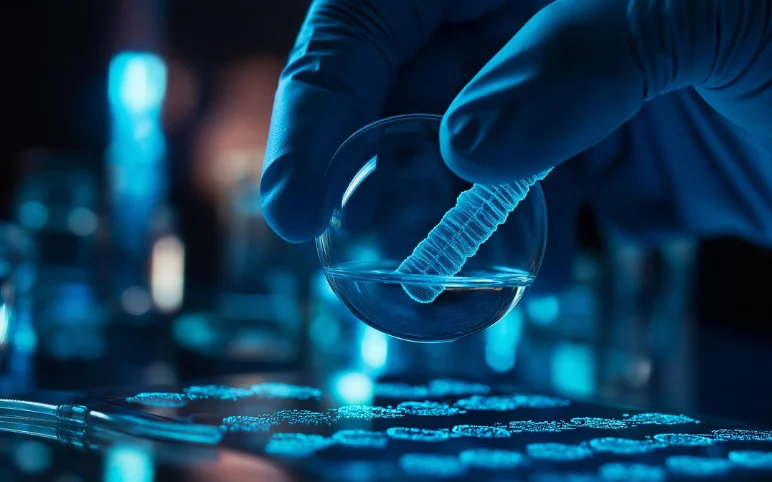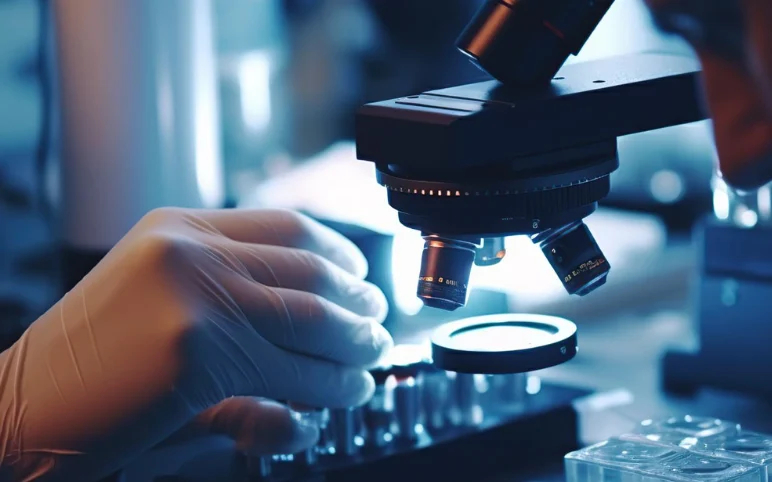Neurovalens Received US FDA Clearance for Non-Invasive Insomnia-Treating Device
On October 30, 2023, Belfast, Northern Ireland-based Neurovalens announced the US Food and Drug Administration clearance for its Modius Sleep device meant for treating chronic insomnia.
Modius has been designed to deliver non-invasive electrical stimulation to key areas of the brain and nervous system. The need for surgically implanted electrodes is eliminated via Modius.
For 30 minutes before bed, the device delivers a small, safe electrical pulse to the head. It allows users to perform activities, like watching television or reading during this period.
The US FDA clearance allows Neurovalens to sell Modius directly to people suffering from chronic insomnia in the U.S. with a prescription.
The data from “robust” Phase III/pivotal clinical trials in the UK and Ireland supported the FDA nod, as said by the Neurovalens. The company now intends to enter talks with insurance providers to pick up reimbursement in the US.
“Having the Modius Sleep technology as a certified medical device for the treatment of chronic insomnia is a landmark step for the company as we focus on future growth in the U.S. market,” said Neurovalens CEO Dr. Jason McKeown. Dr. Jason also commented, “Most other products on the market measure symptoms of insomnia, but Modius Sleep is a non-invasive device that treats the underlying issue, improving the lives of our patients.”
Dr. Jason further added, “We believe that the low-risk, non-invasive therapeutic intervention offered by Neurovalens technology will be truly transformative for a range of serious medical conditions and, having carried out extensive clinical trials in the U.S. and Northern Ireland, we’re excited to be moving to this next stage.”
As per DelveInsight’s “Sleep Tech Devices Market” report, the global sleep tech devices market was valued at USD 16,941.46 million in 2022, growing at a CAGR of 17.31% during the forecast period from 2023 to 2028 to reach USD 44,038.42 million by 2028. The demand for sleep tech devices is primarily being boosted by the increasing patient population suffering from various sleep disorders such as insomnia, obstructive sleep apnea, and others, the surge in cases of depression, increasing number of risk factors such as obesity and smoking among others associated with causing poor sleep, rise in the number of sleep awareness campaigns and programs highlighting the importance of sleep, and innovation in product development among others, thereby contributing to the overall growth of the sleep tech devices market during the forecast period from 2023-2028.
Laborie Medical Technologies Acquired Urotronic
On October 27, 2023, Laborie Medical Technologies Corp., a Leading diagnostic and therapeutic medical technology company, completed the acquisition of Urotronic, Inc., a private medical device company that developed Optilume® drug-coated balloon technology used in interventional urology to treat urethral strictures and benign prostatic hyperplasia (BPH) or enlarged prostate conditions.
The US FDA-approved and CE-marked Optilume is a novel minimally invasive surgical therapy (MIST) that combines mechanical dilation with the delivery of paclitaxel to treat lower urinary tract symptoms (LUTS) secondary to urological stricture or BPH.
“We are delighted to welcome the Urotronic team to Laborie, and we look forward to working together in our mission to deliver innovative technologies in the Interventional Urology space that preserve and restore human dignity,” said Michael Frazzette, President & CEO of Laborie Medical Technologies.
“Joining the Laborie team is an exciting new chapter for Urotronic,” mentioned Urotronic President & CEO David Perry. David added, “Over the last several years, we have seen our partnership develop because we are united on a goal to improve the standard of care for patients and commercialize Optilume products on a global stage.”
“Patricia Industries is excited to continue supporting Laborie’s long-term growth with this acquisition, which aligns with our purpose of creating value for people and society by building strong and sustainable businesses,” said Yuriy Prilutskiy, Head of North America at Patricia Industries, a part of Investor AB, and owner of Laborie Medical Technologies.
According to DelveInsight’s “Urethral Stricture Treatment Devices Market” report, the global urethral stricture treatment devices market was valued at USD 1.48 billion in 2022, growing at a CAGR of 7.10% during the forecast period from 2023 to 2028 to reach USD 2.23 billion by 2028. The demand for urethral stricture treatment devices is witnessing a surge majorly due to the rising prevalence of cancers in the pelvic region such as colorectal and prostate cancers wherein the cancer treatment is linked with an increased probability of urethral stricture formation. Further, growing prevalence of benign prostatic hyperplasia in which urethral stricture may form as a complication of surgical interventions, increasing geriatric population wherein aging plays a major role in the development of numerous diseases such as neurogenic bladder leading to the development of urethral strictures due to extensive use of urinary catheters, and advancements in product development such as drug-eluting urology balloon thereby boosting the growth of the urethral stricture treatment devices market during the forecast period.
Pulsecare Medical’s nsPFA Clinical Trial Received Satisfactory Short-Term Follow-Up Results
On October 30, 2023, Pulsecare Medical, an innovative minimally invasive and non-invasive therapeutic technology company, announced that its nanosecond pulsed field ablation (nsPFA) system for cardiac electrophysiology, the world’s first third-generation pulsed field ablation (PFA) system, has received satisfactory short-term follow-up results from clinical trials.
PFA is a cutting-edge ablation technique based on the non-thermal irreversible electroporation (IRE) effect and high-voltage pulsed energy. It is regarded as an alternative new technology in the field of cardiac electrophysiology. All PFA devices currently in use employ second-generation microsecond pulse field ablation (μsPFA) technology, which may make the ablation surgery more challenging because of the high anesthesia requirements brought on by the patient’s muscle contractions. Discharging in the blood can produce gas, which increases the risk of stroke.
The nsPFA system, developed by Pulsecare Medical, is the first third-generation PFA system in the world that can produce high-voltage, high-repetition-frequency nanosecond pulses for problem-solving.
The application of nanosecond pulses can lessen muscle contraction, enhance surgical safety, and optimize the distribution of the therapeutic electric field. The issues of extreme muscle contraction and high anesthesia requirements of μsPFA are resolved by this technology. Only analgesia can be used to perform the nsPFA procedure. This will establish a crucial basis for the widespread clinical implementation of PFA technology. Many clinical experts have given the system high marks for performance in the clinical enrollment of over ten hospitals in China. Current short-term follow-up data demonstrate an incredibly low recurrence rate and impressive clinical efficacy.
“We will continue to build our nsPFA into a competitive product in the field of cardiac electrophysiology and enrich the comprehensive solutions. Also, we will continue to advance the research and development for the product pipeline of ultrasound RDN and multi-modal tumor ablation system based on the multi-modal energy platform”, said Dr. Javen Tan, CEO of Pulsecare Medical.
According to DelveInsight’s “Ablation Devices Market” report, the global ablation devices market is estimated to grow at a CAGR of 11.65% during the forecast period from 2023 to 2028. Factors such as the increasing incidence of cancers such as liver cancer, the rising prevalence of chronic pains such as musculoskeletal pains, the rising prevalence of cardiac arrhythmias such as atrial fibrillation, and the rising regulatory approvals for technologically advanced ablation devices. Therefore, the market for ablation devices is estimated to grow at a significant CAGR during the forecast period from 2023 to 2028.
US FDA Granted Paige Breakthrough Device Designation for Cancer Detection in Breast Lymph Nodes
On October 26, 2023, Paige, a global leader in end-to-end digital pathology solutions and clinical AI applications that assist in diagnosing cancer, announced that the US Food and Drug Administration (FDA) has granted Breakthrough Device Designation for Paige Lymph Node, an AI application used to detect breast cancer metastases in lymph node tissue.
Paige Lymph Node is the first AI application of its kind to receive Breakthrough Device Designation from the FDA.
The technologies that have the potential to provide for more effective diagnosis or treatment for life-threatening or irreversibly debilitating diseases are granted the FDA’s Breakthrough Device Designation.
Since no approved alternative exists or because the technology offers significant advantages over existing approved alternatives, the timely availability of these technologies is in the best interest of patients.
The software for the in vitro diagnostic medical device known as Paige Lymph Node was developed using a deep learning model that was trained on more than 32,000 digitally scanned hematoxylin and eosin (H&E) lymph node slides. The sensitivity of the Paige Lymph Node to identify breast cancer metastases is almost perfect. Paige Lymph Node will highlight each area of concern for additional review by the pathologist if the lymph node tissue is suspicious for cancer, making the process of diagnosis and assessment simpler and more effective.
Before becoming the first and only FDA-authorized digital pathology application to date, Paige received the breakthrough designation for Paige Prostate Detect2, an AI application intended to help identify cancerous prostate tissue. The FDA has also approved Paige FullFocus2, a whole-slide image viewer, for use in primary diagnosis.
“Pathologic assessment of lymph nodes in breast cancer patients is critically important for prediction of outcome and treatment, yet the process is time-consuming and error-prone,” said David S. Klimstra, M.D., Founder and Chief Medical Officer at Paige. David added, “Paige Lymph Node uses the power of AI to help the pathologist identify even small lymph node metastases rapidly and accurately, ensuring that breast cancer patients receive the optimal management of their disease.”
“We are thrilled with the decision from the FDA to recognize the importance of AI in managing metastatic disease in breast cancer patients,” said Andy Moye, PhD, CEO of Paige. Andy commented, “The Paige Lymph Node algorithm saves pathologists time and provides critical information for pathologists to support their diagnosis amidst unprecedented demands and resource constraints.”
According to DelveInsight’s “Breast Cancer Diagnostics Market” report, the global breast cancer diagnostics market was valued at USD 4.20 billion in 2022, growing at a CAGR of 6.67% during the forecast period from 2023 to 2028 to reach USD 6.16 billion by 2028. The breast cancer diagnostics market is witnessing positive growth owing to factors such as the increasing prevalence of breast cancer, increasing age and sedentary lifestyle, technological advancements, and government initiatives to increase the rate of screening and diagnosis, all factors contributing to the growth of breast cancer diagnostics market during the forecast period from 2023-2028.
Sirtex Medical Announced Commercial Availability of New LAVA® Liquid Embolic System
On October 27, 2023, Sirtex Medical, a leading manufacturer of interventional treatment solutions, announced the commercial availability of the LAVA® Liquid Embolic System, the first and only liquid embolic approved for the treatment of peripheral vascular hemorrhage.
To maximize the flexibility required to treat patients with controlled target vessel occlusion, LAVA® offers volume and viscosity options. The product’s viscosity options enable the distal embolization of tiny vessels that might not be accessible via other emboli, and its 2mL and 6mL options are tailored for the peripheral vasculature.
The LAVA® Liquid Embolic System met both the primary safety and effectiveness endpoints in a study conducted on the embolic treatment of arterial hemorrhage in the peripheral vasculature. In 30 days, 94% of lesions met clinical success, and 100% of patients experienced no major adverse events.
“This product’s ability to maximize the packing density within the target vessel is incredibly important, as it allows us to minimize the likelihood of a future recurrence or restoration of vessel patency,” said Dr. Gary Siskin, Professor, and Chairman of the Department of Radiology at Albany Medical Center.
“The trial was an incredible success. Our goal was to achieve 70% efficacy for the existing data and outcomes, but we were able to achieve 94% efficacy,” said Dr. Bulent Arslan, Professor of the Division of Interventional Radiology and Director of Vascular and Interventional Radiology at RUSH Medical College. Dr. Bulent added, “I’m overjoyed that it’s now available for all of our patients.”
“The approval and availability of LAVA® are especially meaningful to our team because it is addressing previously unmet needs in vascular medicine, with the potential to create a significant impact on patients’ lives,” said Matt Schmidt, Chief Commercial Officer of Sirtex. Matt added, “We are delighted to expand our Sirtex product portfolio with this treatment milestone that directly furthers our mission to improve the quality and longevity of patient lives through innovative medical solutions, and we thank everyone who played a role in achieving it.”
According to DelveInsight’s “Embolic Protection Devices Market” report, the global embolic protection devices market was valued at USD 1.37 billion in 2022, growing at a CAGR of 7.5% during the forecast period from 2023 to 2028 to reach USD 2.11 billion by 2028. The demand for embolic protection devices is primarily being boosted by the increasing figures of cardiovascular diseases such as stroke, stenosis, and others. Further, the rising adoption of advanced and innovative technologies, the increasing demand for minimally invasive therapy, the rising cases of obesity and other risk factors, and the increasing product launches & approval among others are thereby contributing to the overall growth of the embolic protection devices market during the forecast period from 2023-2028.
Recor Medical Presented More Data Supporting Its Renal Denervation System
On October 27, 2023, Otsuka Medical Devices’ Recor Medical announced another set of positive study results for its Paradise ultrasound renal denervation (uRDN) system.
Three RADIANCE global studies’ combined analysis of six-month follow-up data evaluated Paradise as a hypertension treatment. The analysis showed that after receiving uRDN treatment, blood pressure (BP) continued to drop in comparison to sham. Less antihypertensive medication was also added to the treatment group.
The renal denervation system appears to have the best chance of receiving the first FDA approval for the treatment of hypertension, and the data support this theory. The Paradise uRDN system received a favorable vote from an FDA panel in August, and the company is still working to obtain premarket approval. A day later, the same panel decided not to recommend Symplicity Spyral from Medtronic, Recor’s closest rival.
The findings were presented at the 35th annual Transcatheter Cardiovascular Therapeutics (TCT) symposium by co-principal investigator Dr. Ajay Kirtane.
“One of the key questions often asked about renal denervation is whether it is durable, especially in comparison to (or in combination with) antihypertensive medications. In this pooled analysis from the three sham-controlled clinical trials in the RADIANCE program, we observed a continued effect of uRDN at 6 months even with a backdrop of intensive monthly escalation of medications to try to achieve blood pressure control,” said Dr. Kirtane. Dr. Kirtane added, “These data support the role of uRDN as a useful adjunct to established antihypertensive therapies.”
Data gathered from 506 patients who were randomly assigned to three RADIANCE studies and followed up for six months are included in the pooled analysis.
According to Recor Medical, the analysis showed that, at six months, the uRDN group had added fewer medications than the sham group. After adjusting for medication, Paradise was also favored by the difference in daytime ambulatory systolic blood pressure between the groups. Systolic blood pressure differences between home and office over six months also favored uRDN.
Few safety results were reported by the company that were consistent across groups.
“Following the two-month primary endpoint period for each RADIANCE study, our goal was to add antihypertensive medications for each patient with still uncontrolled BP to drive their BP to control, or less than 135/85 mmHg by home BP measurement. Notably, fewer medications were added in fewer patients in the uRDN group while they also achieved a significantly lower average BP than the sham group,” said co-principal investigator Michel Azizi, professor of medicine at Université Paris Cité, Hôpital Européen Georges Pompidou, Paris, France. Michel added, “The maintained reductions in BP provide further evidence of the effectiveness of uRDN as an additional therapy option for treating patients with uncontrolled hypertension.”
Recor’s Paradise system holds a CE mark for treating hypertension in Europe. It remains investigational in the U.S. and Japan.
According to DelveInsight’s “Renal Denervation Devices Market” report, the global renal denervation devices market is estimated to grow at a CAGR of 36.89% during the forecast period from 2023 to 2028. The renal denervation devices market is observing significant market growth primarily owing to the rising prevalence of hypertension as well as the increasing preference for minimally invasive procedures for treatment. Further, surging investments by key players, among others will ultimately affect the demand for renal denervation devices during the forecast period from 2023-2028 growing at a substantial CAGR.



